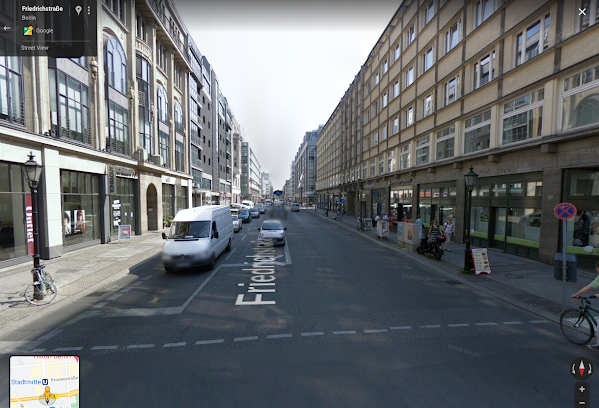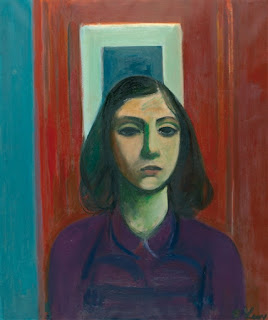 |
| Von Unbekannter Grafiker . - Bildindex der Kunst und Architektur, |
In 1878, the Friedrichsstrasse railway station was opened. Two years later, it was Central-Hotel’s turn to open its large doors, just some yards from the station. The idea was to attract tourists and travelers, thanks to the proximity to the train.
The hotel was biggest in town, with a facade of 100 meters. Five hundred rooms, its own post and telegraph office, a tourist office selling train and round trip tickets, a café-restaurant. Concerts were often held in the hotel, especially in the winter garden which could seat 3.000. The majority of the guests were traveling salesmen who certainly appreciated the American bar and the in-house wine tasting room.
The touristic character was emphasized by several restaurants with premises in the same building (the building occupied a whole block of houses) serving regional food: a Black Forest parlor, a Bavarian beer courtyard, a Heidelberg student hall, a Hansa room, a Silesian barn, an East Frisian fisherman's pub, a Rhineland hall. Was that all ? No way : the Central-Hotel housed also the Central Restaurant with the Diana Bar, the Central Café and the Bauer Café, which had been earlier at the corner of Unter den Linden.
 |
| The winter garden, before being transformed into a theatre |
In terms of capacity, the Central Hotel was larger than its rival, the Kaiserhof, 1500 m away. But despite its equivalent equipment and its better transport connections, the Central couldn’t ultimately compete with the Kaiserhof. While the Kaiserhof was a hotel for diplomats, aristocrats and politicians (I'm sorry to say that some of them were Nazis, including Hitler), the Central Hotel developed into a hotel for passers-by, which attracted more travelers who wanted to stay near the train station.
The Central was in the slightly disreputable area of the Friedrichsstrasse train station while the Kaiserhof was in the posh residential and government district on Wilhelmplatz. Added to this was that Friedrichstrasse was not a wide avenue but an ordinary street, which was disadvantageous for the representative effect of the Central Hotel. And then, the Kaiserhof was not that far from train stations either : it had the Anhalter and the Potsdamer at 600 meters.
By 1910 the Hotel Adlon on Pariser Platz developed into the most prestigious hotel in Berlin, displacing both the Kaiserhof and the Central Hotel. The Central Hotel, however, had a trump card. It housed a magnificent ballroom-winter garden, which after being rebuilt, become the legendary Wintergarten theatre, one of Berlin’s most famous when it came to variety, revue and operetta.
Among the most important owners of Central-Hotel was the Aschinger concern, known for its restaurants and beer halls but also a big actor in the hotel business.
 | |
"From the outset, the Central Hotel was intended to cater for international visitors, advertising itself in Bradshaw’s guides as ‘the most agreeable and comfortable habitation which Berlin can offer to Foreigners.’ Those with expensive tastes could be put up in rooms on the first floor, where were ‘fitted up in princely style’, while the more modest requirements of the ‘merchant and countryman’ could be accommodated on the second and third floors. Newspapers from across the Continent, as well as England and the USA, were offered in the reading room, along with directories of ‘every Capital and [the] most important Manufacturing Towns of the Globe’. The library stocked books in English, French, German, Italian, Spanish and Russian.
Architecturally, the hotel was executed in a neo-Renaissance style like many of the other large-scale building projects taking place across the city at the time. Turrets topped with cupolas and flagstaffs stood at each end of its lengthy and rather austere façade along Friedrichstraße. At street level a parade of shops occupied the ground floor spaces overlooking the street, and included chocolate makers, umbrella makers, cigarette sellers, and stationers.
The public rooms inside the hotel were
the last word in opulence. They boasted marble columns, mahogany
panelling, leather furnishings, and glass chandeliers. Neoclassical
sculptures framed fireplaces and ornate mirrors filled entire walls. Not
a single surface was left without some form of elaborate decoration."
From inthejungleofcities.com
 |
| The reading-room |
 |
| The hotel seen from Friedrichsstrasse facing North. In the background, the station's railway bridge. |



























